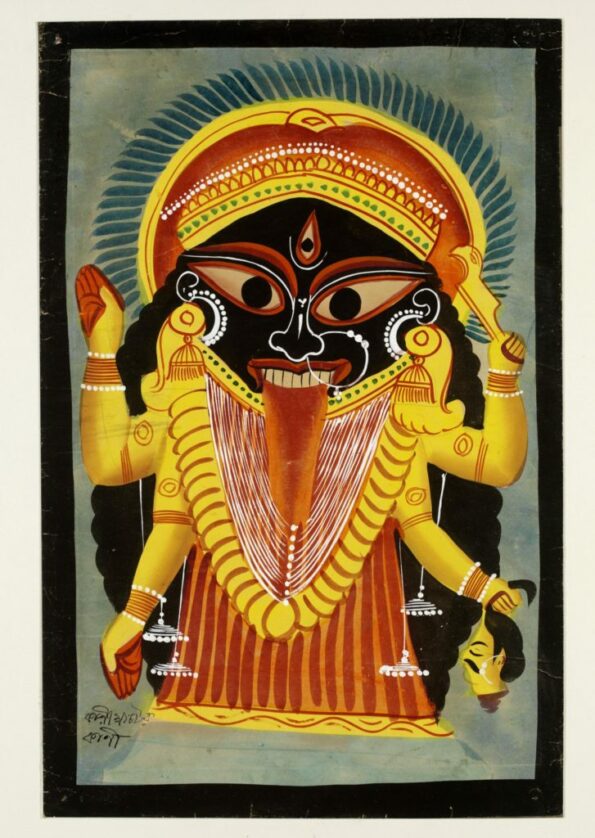A treasure of artistic expression may be found among Kolkata’s colorful culture and rich history, on the busy streets: the Kalighat murals. These paintings, which first appeared in the 19th century at the Kalighat Temple, were well-known for their vivid colors, strong lines, and unique subjects drawn from Hindu mythology and everyday life. But as the art form developed over time, it also started to adopt Western methods, resulting in an intriguing shift in both its story and aesthetic.
Historical Origins and Evolution

Originally created as mementos for pilgrims visiting the Kalighat Temple, Kalighat paintings were well-liked by the community. Artists used a distinctive fusion of simplicity and expressiveness to portray scenes from Hindu epics, mythical stories, and everyday life. But when British colonization arrived and European art began to influence Kalighat paintings, they changed.
Narrative Shifts and Contemporary Themes
The subject matter of Kalighat paintings changed in tandem with technological advancements. While conventional themes remained popular, artists began experimenting with social commentary and current topics. As the socio-political climate of colonial India changed, images of urban life, political satire, and parodies of British officials proliferated.

Cultural Significance and Legacy of Kalighat Paintings

The cultural authenticity and relevance of Kalighat paintings were kept even after incorporating Western elements. They acted as a window into society, encapsulating the spirit of the times and the culture at large. These paintings demonstrate the dynamic interaction between tradition and modernity and are now prized for their historical and cultural significance in addition to their artistic appeal.
The development of Kalighat paintings serves as an example of how ancient art forms may adapt and endure in the face of shifting cultural influences. Through the use of Western methods and a commitment to local storytelling, Kalighat artists have developed a distinctive blend that has captured the attention of audiences all over the world. It is our responsibility as custodians of cultural legacy to acknowledge and honor these creative legacies in order to guarantee their continued existence for future generations.












